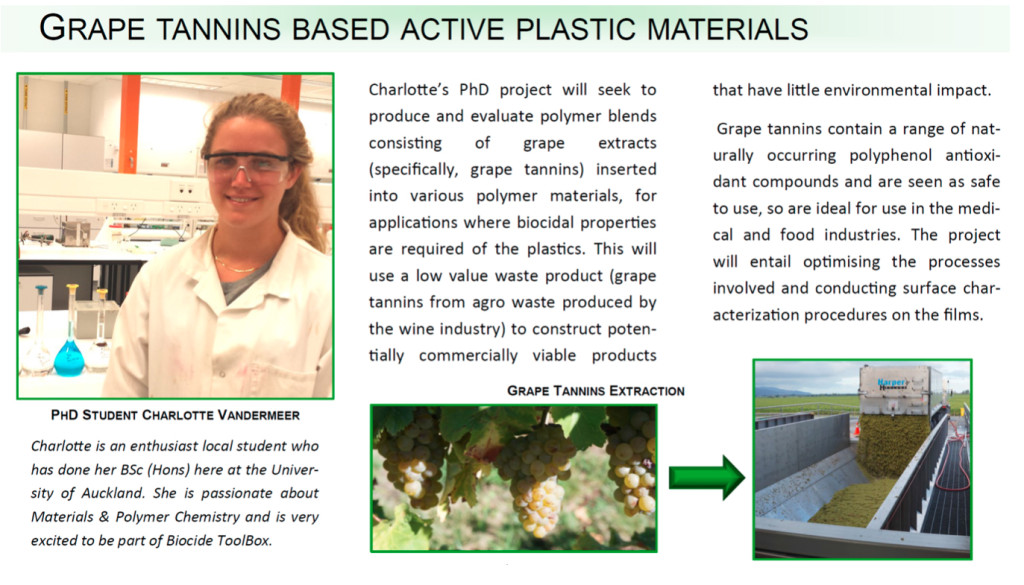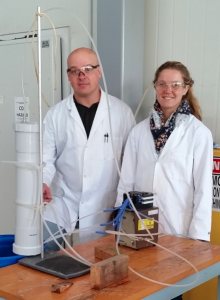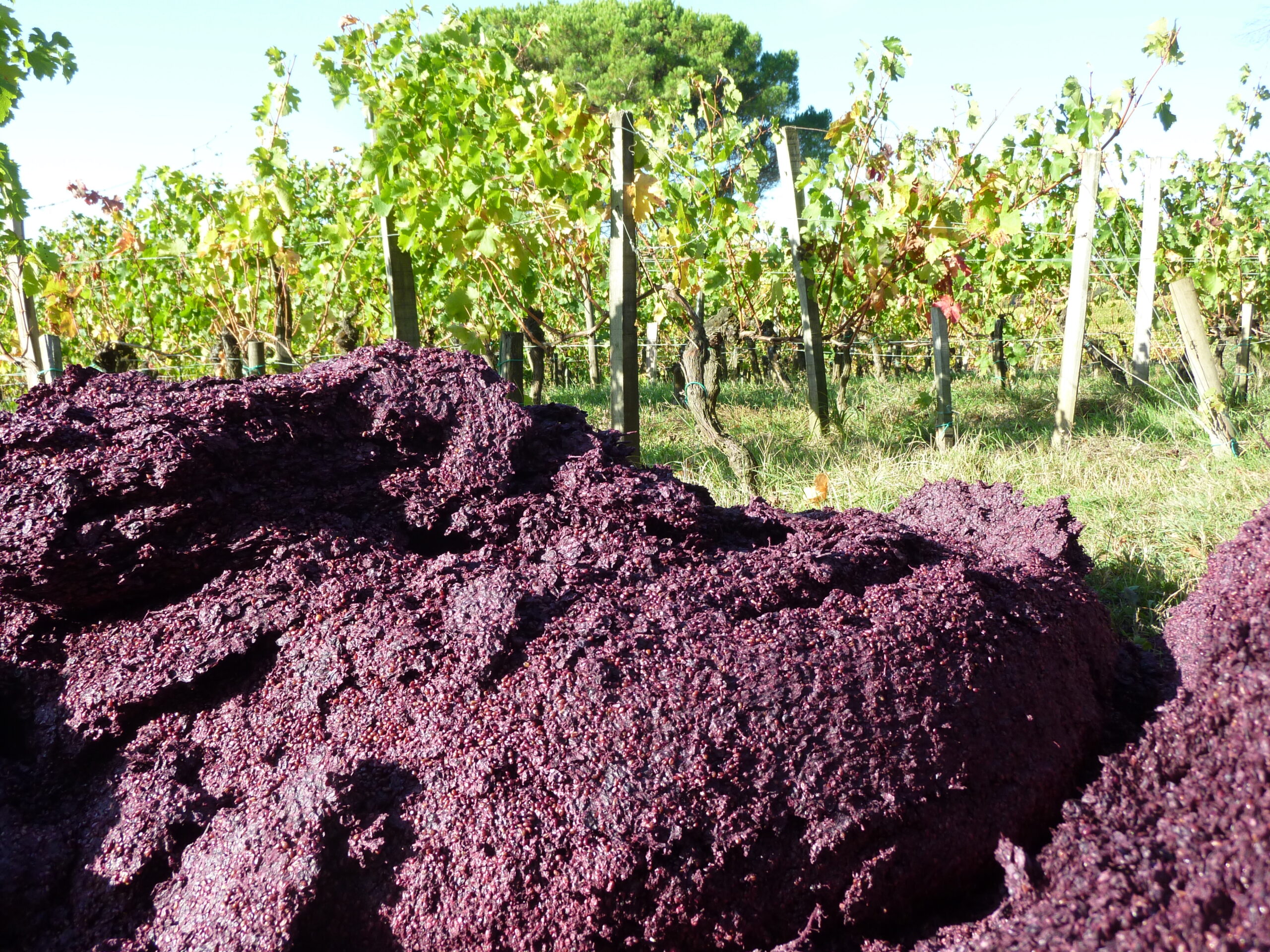The development of novel, environmentally sustainable processes is an important research focus for members of the Centre for Green Chemical Science (CGCS) at the University of Auckland. The invention of a sustainable method to reduce food spoilage and a non-toxic polymer based antimicrobial are two projects that CGCS members have recently progressed to an exciting stage.
 Food spoilage is currently reduced by adding artificial antioxidant and antimicrobial agents to food packaging. However, these chemicals can leach into the food and wider environment. An alternative idea pursued at CGCS is to attach natural polymeric additives to the packaging surface which, due to their increased size, will not leach into the food product. Antioxidant tannin polymers are excellent candidates for this role. Tannins are natural compounds found in large quantities in grape skins and seeds and provide wines with important mouthfeel properties. At the CGCS, researchers led by Prof. Paul Kilmartin have developed a water-based extraction procedure to obtain grape tannins from residual grape waste (also known as grape marc) remaining after the juice has been pressed off during the wine making process.
Food spoilage is currently reduced by adding artificial antioxidant and antimicrobial agents to food packaging. However, these chemicals can leach into the food and wider environment. An alternative idea pursued at CGCS is to attach natural polymeric additives to the packaging surface which, due to their increased size, will not leach into the food product. Antioxidant tannin polymers are excellent candidates for this role. Tannins are natural compounds found in large quantities in grape skins and seeds and provide wines with important mouthfeel properties. At the CGCS, researchers led by Prof. Paul Kilmartin have developed a water-based extraction procedure to obtain grape tannins from residual grape waste (also known as grape marc) remaining after the juice has been pressed off during the wine making process.

PhD students Ken Olejar and Charlotte Vandermeer (MBIE The Biocide Toolbox), developing extraction methods for grape tannins.
Grape marc is available in very large quantities as a waste product from the wine industry. The resulting tannin powder is rich in polymeric antioxidants, which have also been shown to possess antimicrobial properties. These tannins have been successfully blended into biodegradable polymers such as ethyl cellulose and with a number of the more common plastics such as polyethylene and polypropylene. The resulting films retain the properties of the original plastics but now in addition possess effective surface antioxidant properties. Initial results indicate the new films may provide a sustainable, non-toxic solution to the prevention of food spoilage. This research is currently being further investigated as one of several Research Aims within the large MBIE supported research programme (The Biocide Toolbox, BTB). The BTB aims to develop greener commercial biocides for deployment in high value manufactured products for export.
Another antimicrobial polymer project occupying researchers at the CGCS is the use of electrospun polymer-based nanofibrous composites for health care applications. The key initial work was conducted by Dr Marija Gizdavic-Nikolaidis and funding from a FRST NZ postdoctoral scholarship is gratefully acknowledged. The research was further developed through an MBIE Hybrid Polymers programme with several other contributors including Professor Ralph Cooney, Associate Professor Simon Swift, (the late) Associate Professor Allan Easteal and Dr Sudip Ray. This culminated in the production of a new class of electrospun conductive nanofibrous biocomposites that allow mammalian cells to attach and proliferate, while killing pathogenic bacterial cells. These biopolymer composites are potentially well-suited for use in tissue engineering and as antimicrobial wound dressings that do not require the addition of other antimicrobials such as silver or iodine. This research also generated the antimicrobial polymer (AMP) technology (Auckland Uniservices Ltd, University of Auckland), which has already generated industrial interest for a wide range of applications such personal care, health care, wound dressings, water and air filtration, antimicrobial plastic additives, antimicrobial paints and coatings, wood and paper, marine industry and consumer products. The patents for this technology are already granted in New Zealand, Australia and Japan (USA, China and Europe patents applications are pending).
AMP technology has exceptional antimicrobial efficacy against a broad range of microorganisms (Gram positive and Gram negative bacteria including multi-resistance bacteria such as MRSA), fungi and viruses at a low concentration load (<1 wt %). This low-cost technology provides a very high speed antimicrobial action and has high temperature resistance. It is non-leachable, non-toxic to mammalian cells and can be incorporated in or coated on conventional plastics. AMP possesses many advantages over currently available antimicrobials such as triclosan and nanosilver. These include increased biocompatibility, no skin irritation and a low probability of bacteria developing resistance due to its multi-faceted mode of killing.
In 2014 the AMP technology was successfully licensed to the US-based company TiFiber Inc. In collaboration with one of the world’s leading soap manufacturers (Bradford company), TiFiber Inc. is developing an AMP-based formulation that can replace toxic antimicrobials such as triclosan and triclocarban that are currently used in personal care products. In March 2015, TiFiber Inc. was selected as one of sixteen new technology companies (over 2009 exhibitors from 37 countries) to exhibit the AMP technology at the NPE 2015 International Plastic Showcase “Start-up garage” in Orlando, USA. It is anticipated that Tifiber Inc. will begin large-scale production of AMPs in 2017. The antimicrobials market is growing at a rapid pace, with the prediction that it will be worth $US3.3 billion globally by 2018. The integration of AMP into soap is just the first application of this technology which could become a $US100 million opportunity within a multibillion dollar industry.
Thanks to Dr. Marija Gizdavic-Nikolaidis and Prof. Paul Kilmartin for their assistance in the production of this piece.



Leave a comment